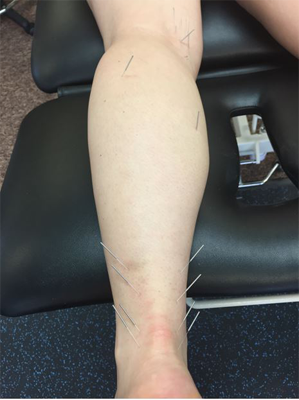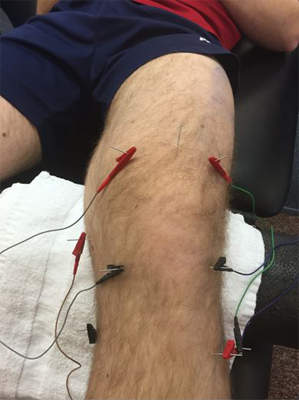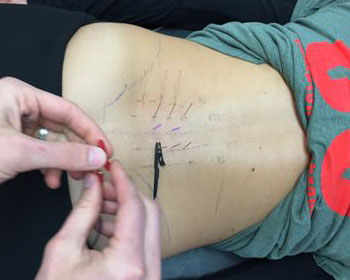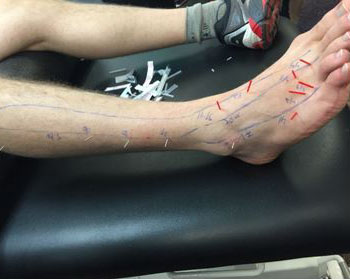Londonderry Physical Therapy clinical staff are trained and certified in superficial and deep Dry Needling techniques. Dry needling (DN) is a treatment technique, in which small monofilament needles are inserted into myofascial trigger points (known as painful knots in muscles), tendons, ligaments, or near nerves in order to stimulate a healing response with the goal of permanently reducing pain and dysfunction. When trigger points are present, they cause the muscles they are in to neurologically tighten which serves to further disrupt the normal functioning of that muscle due to increased pain and local compression of vascular structures and nerves. Our clinicians DNto effectively treat acute and chronic orthopedic and neuro-musculoskeletal conditions to include, but are not limited to: whiplash associated disorders, headaches, rib syndromes, cervical radiculopathy (radiating symptoms down the arm), neck pain, carpal tunnel syndrome, shoulder impingement syndrome, lateral epicondylalgia (Tennis Elbow), TMJ dysfunction, low back pain, acute lumbar radiculopathy (“sciatica”), hip dysfunction, osteoarthritis, Achilles tendinosis, and plantar fasciitis.
Is Dry Needling like Acupuncture?
DN is not acupuncture or Oriental Medicine. DN is a treatment that uses solid monofilament, disposable needles. Dry Needling is based on Western medical research and principles, whereas acupuncture is based on Traditional Chinese Medicine in which the purpose is to alter the flow of energy (“Qi”) along traditional Chinese meridians for the treatment of diseases. The theoretical backgrounds for the two treatments are very different. In fact, DN is a modern, science-based intervention for the treatment of pain and dysfunction in musculoskeletal conditions throughout the body. DN directly treats the neuromuscular system affecting muscle tightness, joint mobility, and symptoms of pain and irritation.
Does Dry Needling hurt?
Each patient describes the processes of being needled differently depending on what tissues are being treated. Typically, patients report not feeling the needle actually penetrate the skin and to most, the treatment is painless. Patients most likely will feel a deep cramping of the muscle that the needle was inserted into along with some involuntary muscle jumps/twitches. This is called the local twitch response (LTR) and means that we are positively affecting the desired tissue. As the needle stays in the tissue, these sensations subside and more times than not, the patient is no longer aware that the needles are even still inserted.
How does Dry Needling work and what does the needle actually do?
Needles can be placed in or around various structures in the body depending on the desired response. When the fine, hair-like needle is inserted into a trigger point, a local twitch response (LTR) can be elicited. This LTR is a quick contraction reflex of the muscle that can be both diagnostic and therapeutic. Research has shown that when the LTR is elicited, the tissue will have a decreased muscle contraction, reduced chemical irritation, improved flexibility and can provide short term pain relief. This can often immediately improve range of motion, improve function and decrease or eliminate pain. Depending on the patient’s particular pathology, the aim of Dry Needling may be different and therefore the desired physiological response is also different.More specifically, DN has been shown to have many physiological mechanisms to reduce pain and disability.

Semi-standardized dry needling protocol for achilles tendinopathy/tendinosis (herringbone technique)

Electro-Dry Needling For Chronic Knee Pain Or Osteoarthritis

Electro-Dry Needling For Low Back Pain (Degenerative Disc Disease, Herniated Disc, Nerve Root Entrapment)

Dry Needling Of Distal Points Along L5-S1 Nerve Pathway (Sural Nerve, Medial/Lateral Plantar Nerve)


